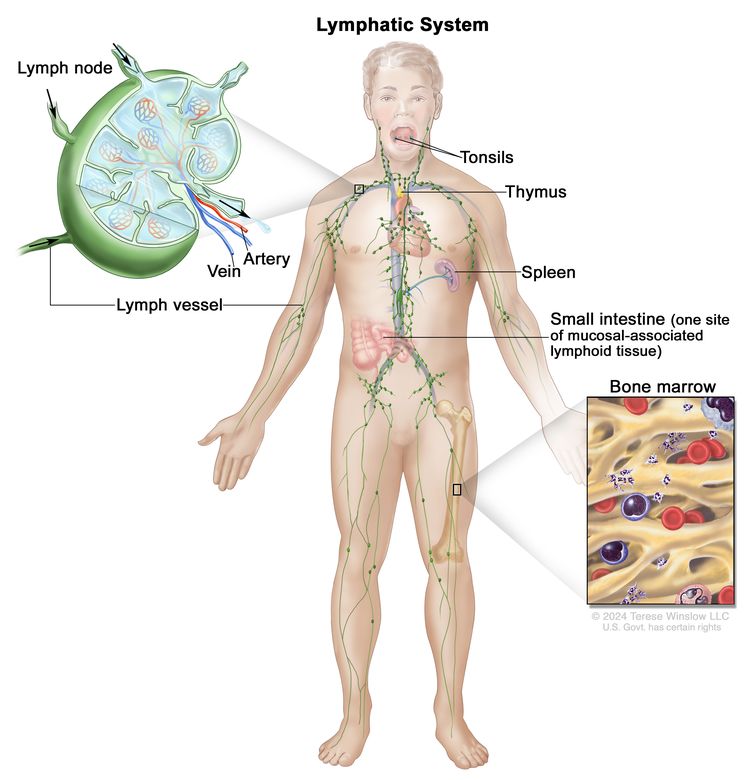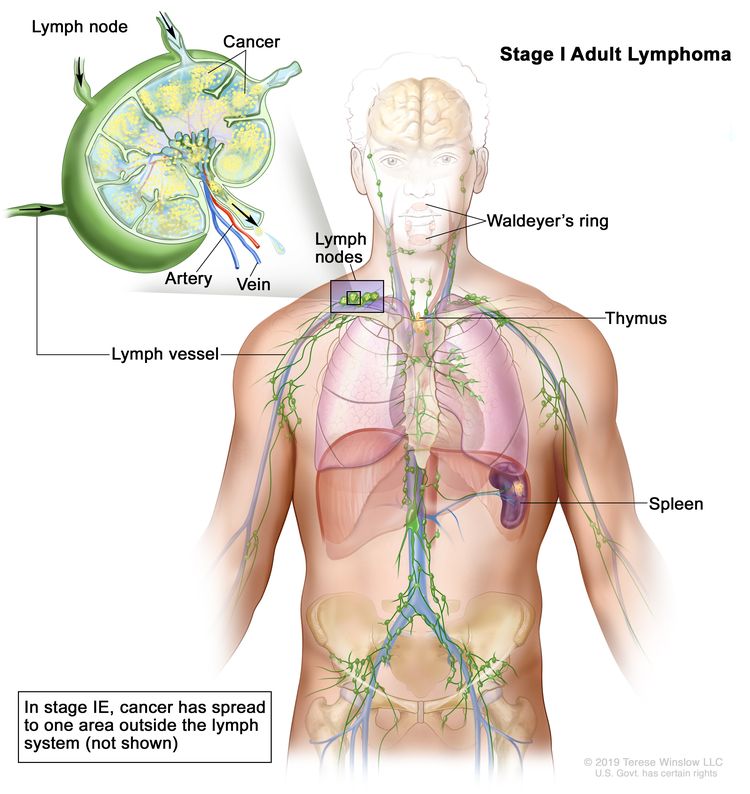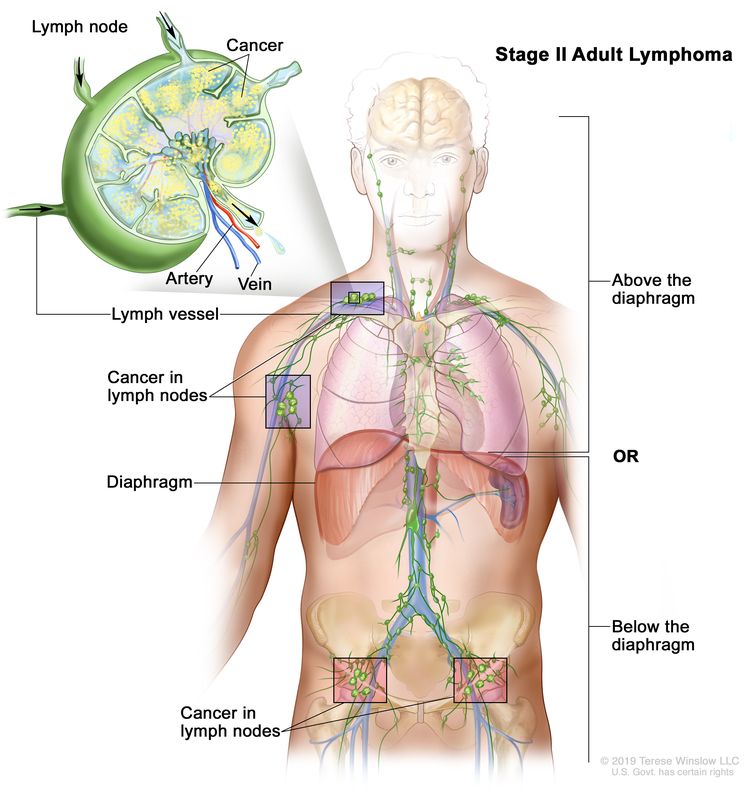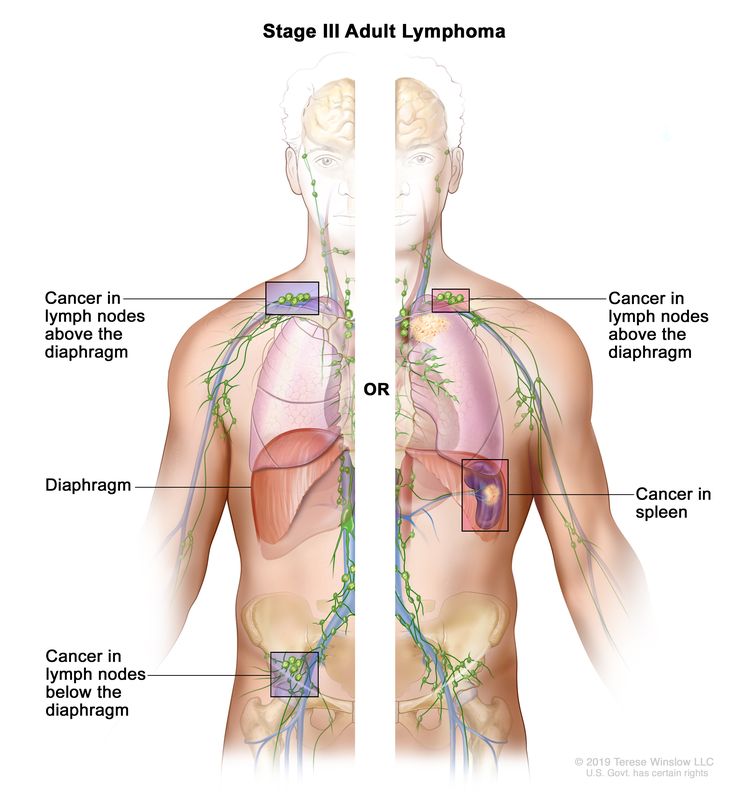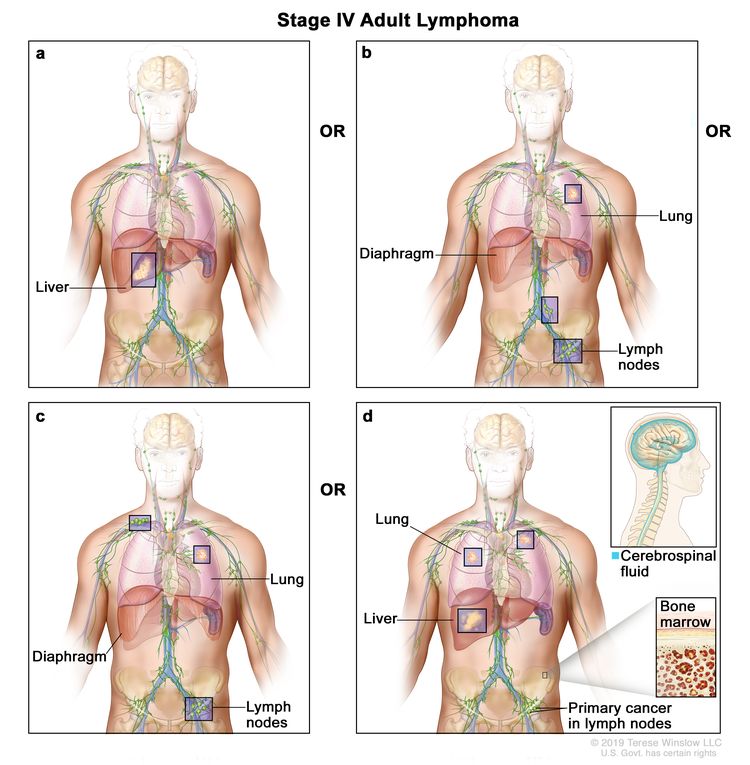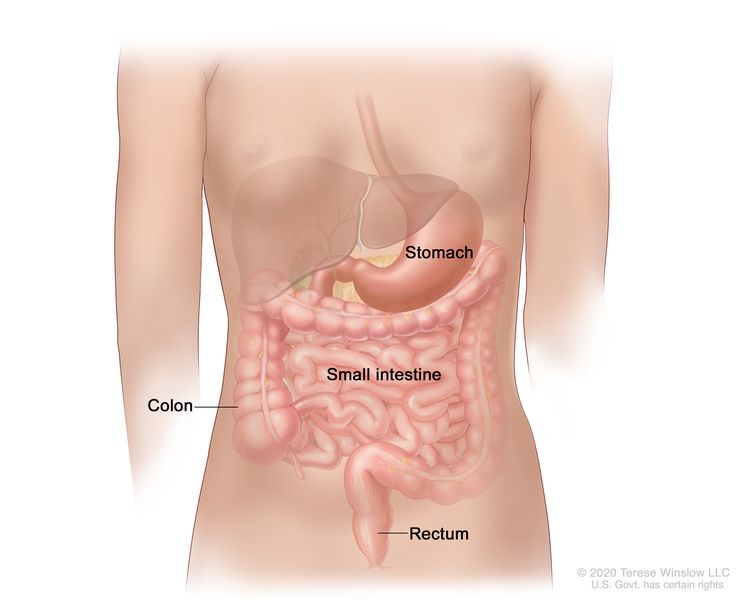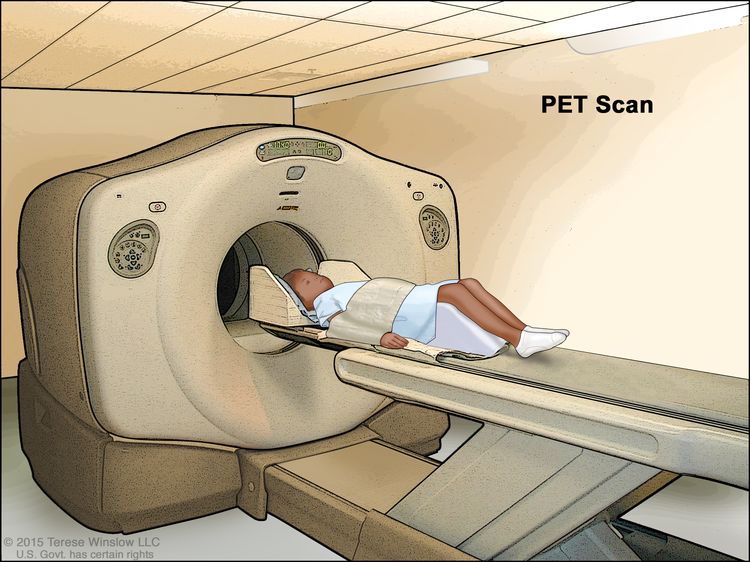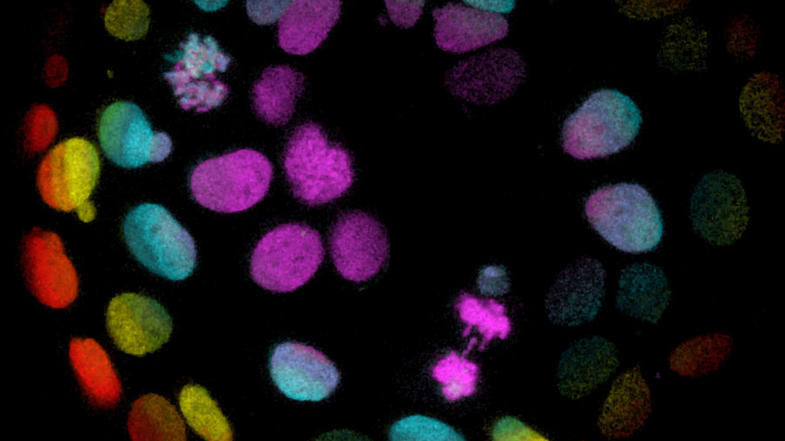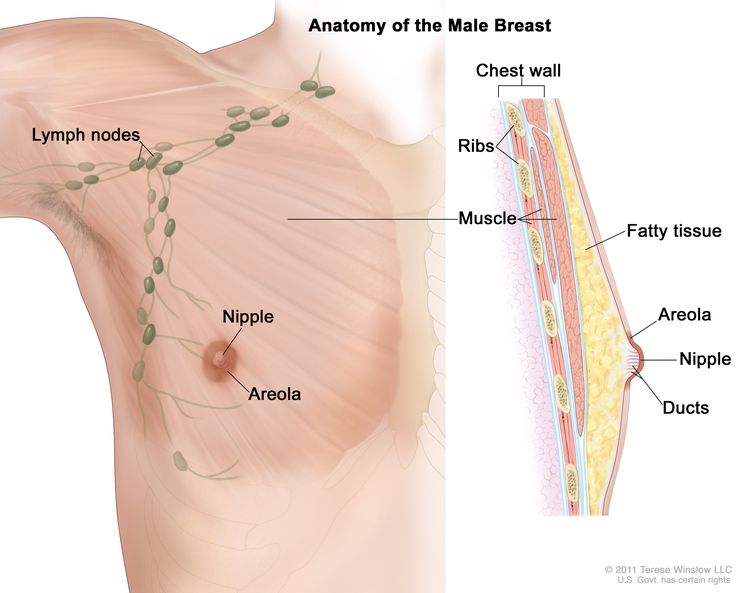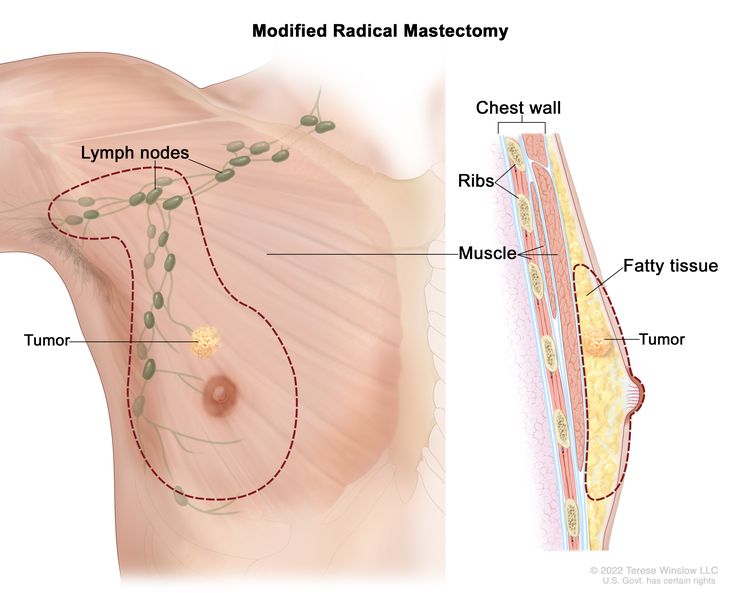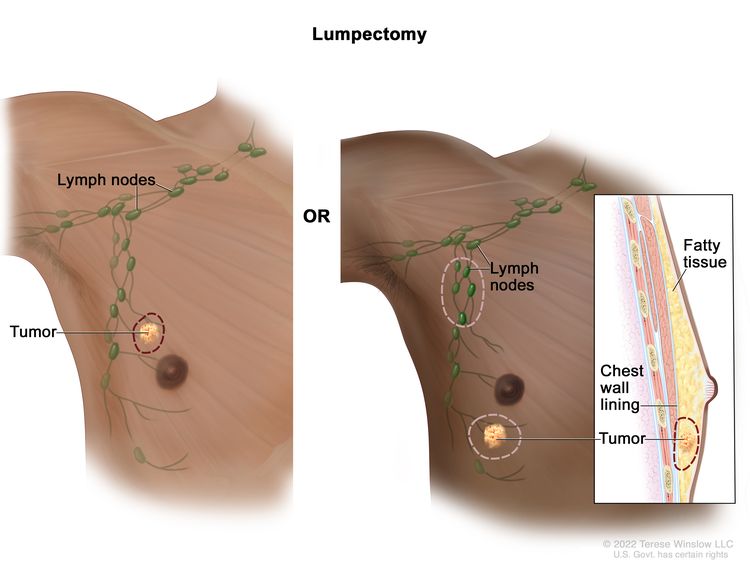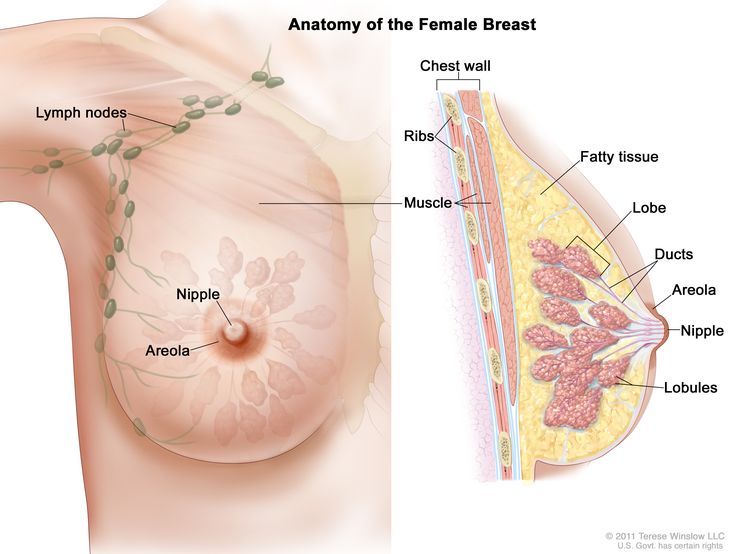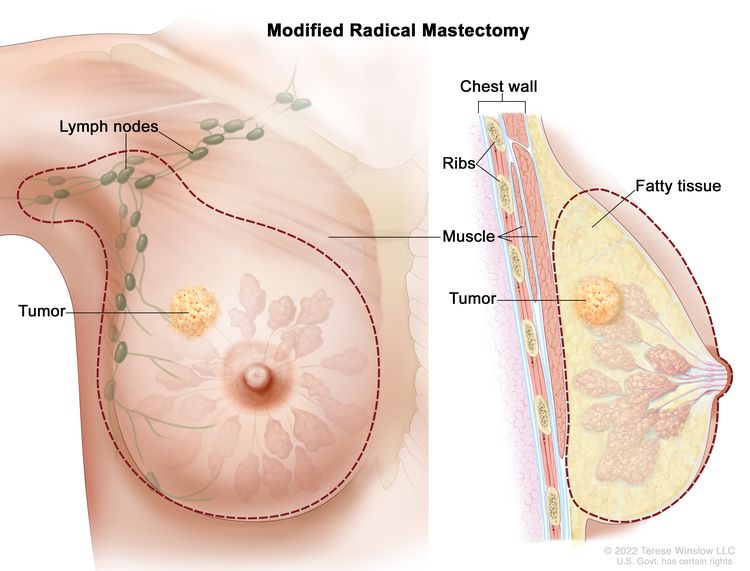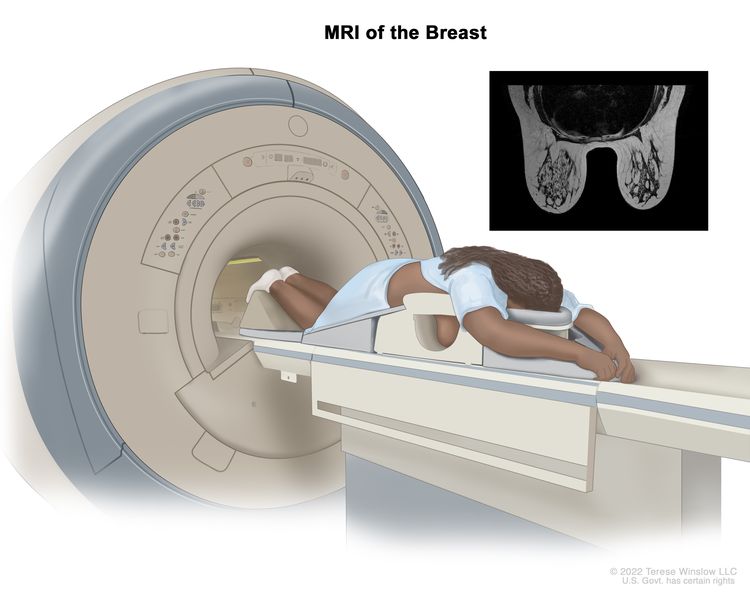Childhood Colorectal Cancer (PDQ®)–Patient Version
What is childhood colorectal cancer?
Childhood colorectal cancer is a rare cancer that forms in the tissues of the colon or the rectum. In the United States, there are fewer than 100 children diagnosed with colorectal cancer each year.
The colon is part of the body’s digestive system. The digestive system removes and processes nutrients (vitamins, minerals, carbohydrates, fats, proteins, and water) from foods and helps pass waste material out of the body. The digestive system is made up of the mouth, throat, esophagus, stomach, and the small and large intestines. The colon (large bowel) is the main part of the large intestine and is about 5 feet long in an adult. Together, the rectum and anal canal make up the last part of the large intestine and are 6 to 8 inches long. The anal canal ends at the anus (the opening of the large intestine to the outside of the body).
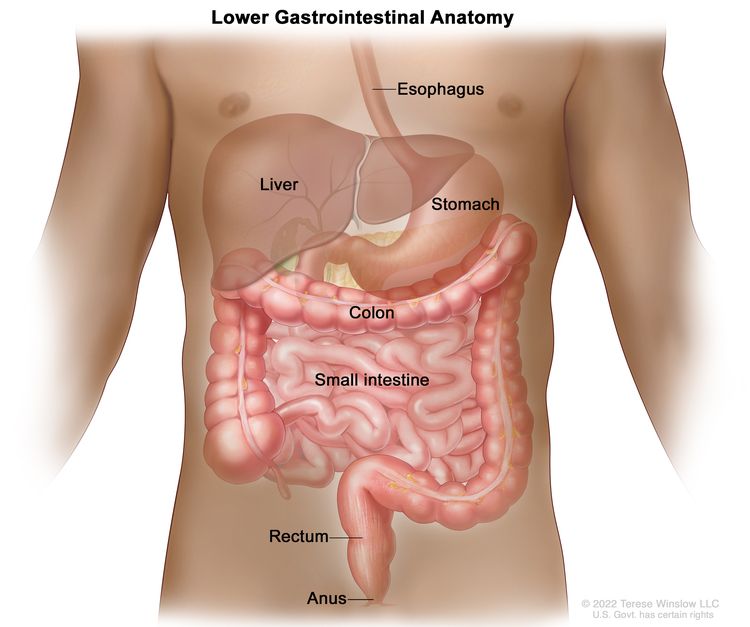
Causes and risk factors for childhood colorectal cancer
Childhood colorectal cancer is caused by certain changes to the way the cells in the colon or rectum function, especially how they grow and divide into new cells. Often, the exact cause of these changes is unknown. Learn more about how cancer develops at What Is Cancer?
A risk factor is anything that increases the chance of getting a disease. Not every child with one or more of these risk factors will develop colorectal cancer. And it will develop in some children who don’t have a known risk factor.
Childhood colorectal cancer may be part of an inherited cancer syndrome. Inherited cancer syndromes are caused by changes in certain genes passed from parents to children. The following inherited cancer syndromes increase a child’s risk of colorectal cancer:
Children with Crohn disease or ulcerative colitis may be at increased risk of colorectal cancer.
Polyps that form in the colon of children who do not have an inherited syndrome are not linked to an increased risk of cancer.
Talk with your child’s doctor if you think your child may be at risk.
Genetic counseling for children with colorectal cancer
It may not be clear from the family medical history whether your child’s colorectal cancer is part of an inherited condition. Genetic counseling can assess the likelihood that your child’s cancer is inherited and whether genetic testing is needed. Genetic counselors and other specially trained health professionals can discuss your child’s diagnosis and your family’s medical history to help you understand the:
- options for testing for changes in the APC, NF1, MUTYH, NTHL1, and other genes
- risk of other cancers for your child
- risk of colorectal cancer or other cancers for your child’s siblings
- risks and benefits of learning genetic information
Genetic counselors can also help you cope with your child’s genetic testing results, including how to discuss the results with family members. They can also advise about whether other members of your family should receive genetic testing.
Learn more about Genetic Testing for Inherited Cancer Risk.
Symptoms of childhood colorectal cancer
Symptoms of childhood colorectal cancer usually depend on where the tumor forms. It’s important to check with your child’s doctor if your child has:
These symptoms may be caused by problems other than colorectal cancer. The only way to know is for your child to see a doctor.
Tests to diagnose childhood colorectal cancer
If your child has symptoms that suggest colorectal cancer, the doctor will need to find out if these are due to cancer or another problem. The doctor will ask when the symptoms started and how often your child has been having them. They will also ask about your child’s personal and family medical history and do a physical exam. Depending on these results, they may recommend other tests.
Diagnosis of childhood colorectal cancer
The following tests and procedures are used to diagnose colorectal cancer. The results will also help you and your child’s doctor plan treatment.
Colonoscopy
A colonoscopy looks inside the rectum and colon for polyps, abnormal areas, or cancer. A colonoscope is inserted through the rectum into the colon. A colonoscope is a thin, tube-like instrument with a light and a lens for viewing. It also has a tool to remove polyps or tissue samples, which are checked under a microscope for cancer.
Barium enema
A barium enema is a series of x-rays of the lower gastrointestinal tract. A liquid that contains barium (a silver-white metallic compound) is put into the rectum. The barium coats the lower gastrointestinal tract and x-rays are taken. This procedure is also called a lower GI series.
Fecal occult blood test
A fecal occult blood test checks stool for blood that can only be seen with a microscope. Small samples of stool are placed on special cards and returned to the doctor or laboratory for testing.
Complete blood count (CBC)
A CBC checks a sample of blood for:
- the number of red blood cells, white blood cells, and platelets
- the amount of hemoglobin (the protein that carries oxygen) in the red blood cells
- the amount of hematocrit (whole blood that is made up of red blood cells)
Carcinoembryonic antigen (CEA) assay
A CEA test measures the level of carcinoembryonic antigen (CEA) in the blood. CEA is released into the bloodstream from both cancer cells and normal cells. When found in higher-than-normal amounts, CEA can be a sign of colorectal cancer or other conditions.
Molecular testing
A molecular test checks for certain genes, proteins, or other molecules in a sample of tissue, blood, or bone marrow. Molecular tests also check for certain changes in a gene or chromosome that may cause or affect the chance of developing colorectal cancer. A molecular test may be used to help plan treatment, find out how well treatment is working, or make a prognosis.
The Molecular Characterization Initiative offers free molecular testing to children, adolescents, and young adults with certain types of newly diagnosed cancer. The program is offered through NCI’s Childhood Cancer Data Initiative. To learn more, visit About the Molecular Characterization Initiative.
Tests to stage childhood colorectal cancer
If your child has been diagnosed with colorectal cancer, your child will be referred to a pediatric oncologist. This is a doctor who specializes in diagnosing and treating childhood cancers. Your child’s doctor will recommend tests to find out if the cancer has spread and if so, how far. The process of learning the extent of cancer in the body is called staging. At the time of diagnosis, colorectal cancer in children has often spread to the lymph nodes, outside the colon or rectum, or to other organs in the abdomen.
The following imaging tests and procedures may be used to determine the stage of colorectal cancer:
PET scan
A PET scan (positron emission tomography scan) uses a small amount of radioactive sugar (also called radioactive glucose) that is injected into a vein. The PET scanner rotates around the body and makes a picture of where sugar is being used by the body. Cancer cells show up brighter in the pictures because they are more active and take up more sugar than normal cells do. When this procedure is done at the same time as a CT scan or an MRI, it is called a PET-CT scan or a PET-MRI.
Magnetic resonance imaging (MRI)
MRI uses a magnet, radio waves, and a computer to make a series of detailed pictures of areas in the body, such as the chest, abdomen, and pelvis. This procedure is also called nuclear magnetic resonance imaging (NMRI).
CT scan
CT scan (CAT scan) uses a computer linked to an x-ray machine to make a series of detailed pictures of areas inside the body, such as the chest. The pictures are taken from different angles and are used to create 3-D views of tissues and organs. A dye may be injected into a vein or swallowed to help the organs or tissues show up more clearly. This procedure is also called computed tomography, computerized tomography, or computerized axial tomography. Learn more at Computed Tomography (CT) Scans and Cancer.
Getting a second opinion
You may want to get a second opinion to confirm your child’s cancer diagnosis and treatment plan. If you seek a second opinion, you will need to get medical test results and reports from the first doctor to share with the second doctor. The second doctor will review the genetic test results, pathology report, slides, and scans. This doctor may agree with the first doctor, suggest changes to the treatment plan, or provide more information about your child’s cancer.
To learn more about choosing a doctor and getting a second opinion, visit Finding Cancer Care. You can contact NCI’s Cancer Information Service via chat, email, or phone (both in English and Spanish) for help finding a doctor or hospital that can provide a second opinion. For questions you might want to ask at your child’s appointments, visit Questions to Ask Your Doctor About Cancer.
Stages of childhood colorectal cancer
Cancer stage describes the extent of cancer in the body, such as the size of the tumor, whether it has spread, and how far it has spread from where it first formed. It is important to know the stage of colorectal cancer to plan the best treatment.
There are several staging systems for cancer that describe the extent of the cancer. Colorectal cancer staging for adults and children usually uses the TNM staging system. You may see your child’s cancer described by this staging system in your pathology report. Based on the TNM results, a stage (I, II, III, or IV, also written as 1, 2, 3, 4) is assigned to your child’s cancer. When talking to you about your child’s cancer, the doctor may describe it as one of these stages.
For information about how doctors stage colorectal cancer, visit the Tests to stage colorectal cancer section. Learn more about the TNM colorectal cancer staging system in the Stages of Colon Cancer section of Colon Cancer Treatment.
Types of treatment for childhood cancer
Who treats children with colorectal cancer?
A pediatric oncologist, a doctor who specializes in treating children with cancer, oversees treatment of colorectal cancer. The pediatric oncologist works with other health care providers who are experts in treating children with cancer and also specialize in certain areas of medicine. Other specialists may include:
There are different types of treatment for children and adolescents with colorectal cancer. You and your child’s care team will work together to decide treatment. Many factors will be considered, such as your child’s overall health and whether the cancer is newly diagnosed or has come back.
Your child’s treatment plan will include information about the cancer, the goals of treatment, treatment options, and the possible side effects. It will be helpful to talk with your child’s care team before treatment begins about what to expect. For help every step of the way, visit our booklet, Children with Cancer: A Guide for Parents.
Types of treatment your child might have include:
Surgery
Surgery to remove the cancer is done if the cancer has not spread to other parts of the body at diagnosis. Learn more about Surgery to Treat Cancer.
Radiation therapy
Radiation therapy uses high-energy x-rays or other types of radiation to kill cancer cells or keep them from growing. Colorectal cancer may be treated with external beam radiation therapy. This type of radiation therapy uses a machine outside the body to send radiation toward the area of the body with cancer. Radiation therapy may be given alone or with other treatments, such as chemotherapy.
Learn more about External Beam Radiation Therapy for Cancer and Radiation Therapy Side Effects.
Chemotherapy
Chemotherapy (also called chemo) uses drugs to stop the growth of cancer cells. Chemotherapy either kills the cancer cells or stops them from dividing. Chemotherapy may be given alone or with other types of treatment, such as radiation therapy.
For colorectal cancer, chemotherapy is taken by mouth or injected into a vein. When given this way, the drugs enter the bloodstream to reach cancer cells throughout the body. Chemotherapy drugs used alone or in combination to treat colorectal cancer in children include:
Other chemotherapy drugs not listed here may also be used.
To learn more about how chemotherapy works, how it is given, common side effects, and more, visit Chemotherapy to Treat Cancer.
Immunotherapy
Immunotherapy helps a child’s immune system fight cancer. Immunotherapy drugs that may be used to treat colorectal cancer include:
Learn more about how immunotherapy works against cancer, how it is given, possible side effects, and more at Immunotherapy to Treat Cancer.
Clinical trials
For some children, joining a clinical trial may be an option. There are different types of clinical trials for childhood cancer. For example, a treatment trial tests new treatments or new ways of using current treatments. Supportive care and palliative care trials look at ways to improve quality of life, especially for those who have side effects from cancer and its treatment.
You can use the clinical trial search to find NCI-supported cancer clinical trials accepting participants. The search allows you to filter trials based on the type of cancer, your child’s age, and where the trials are being done. Clinical trials supported by other organizations can be found on the ClinicalTrials.gov website.
Learn more about clinical trials, including how to find and join one, at Clinical Trials Information for Patients and Caregivers.
Treatment of childhood colorectal cancer
Treatment of newly diagnosed colorectal cancer in children may include:
- surgery to remove the tumor if it has not spread
- radiation therapy and chemotherapy for tumors in the rectum or lower colon
- combination chemotherapy, for advanced colorectal cancer
Children with certain inherited cancer syndromes may be treated with:
- surgery to remove the colon before cancer forms
- medicine to decrease the number of polyps in the colon
Treatment of colorectal cancer that cannot be removed by surgery, has spread to other parts of the body, or has continued to grow and spread after treatment may include immunotherapy with nivolumab or pembrolizumab. Immunotherapy is only given if your child has certain inherited cancer syndromes or if the cancer has specific gene changes.
If the cancer comes back after treatment, your child’s doctor will talk with you about what to expect and possible next steps. There might be treatment options that may shrink the cancer or control its growth. If there are no treatments, your child can receive care to control symptoms from cancer so they can be as comfortable as possible.
Prognostic factors for childhood colorectal cancer
If your child has been diagnosed with colorectal cancer, you likely have questions about how serious the cancer is and your child’s chances of survival. The likely outcome or course of a disease is called prognosis.
The prognosis depends on:
Childhood colorectal cancer is challenging to treat because it has usually spread to other areas in the body at diagnosis. Your child’s care team is in the best position to talk with you about your child’s prognosis.
Side effects and late effects of treatment
Cancer treatments can cause side effects. Which side effects your child might have depends on the type of treatment they receive, the dose, and how their body reacts. Talk with your child’s treatment team about which side effects to look for and ways to manage them.
To learn more about side effects that begin during treatment for cancer, visit Side Effects.
Problems from cancer treatment that begin 6 months or later after treatment and continue for months or years are called late effects. Late effects of cancer treatment may include:
- physical problems
- changes in mood, feelings, thinking, learning, or memory
- second cancers (new types of cancer) or other problems
Some late effects may be treated or controlled. It is important to talk with your child’s doctors about the possible late effects caused by some treatments. Learn more about Late Effects of Treatment for Childhood Cancer.
Follow-up care
As your child goes through treatment, they will have follow-up tests or check-ups. Some of the tests that were done to diagnose the cancer may be repeated to see how well the treatment is working. Decisions about whether to continue, change, or stop treatment may be based on the results of these tests.
Some of the tests will continue to be done from time to time after treatment has ended. The results of these tests can show if your child’s condition has changed or if the cancer has recurred (come back).
To learn more about follow-up tests, visit Tests to diagnose childhood colorectal cancer.
Coping with your child's cancer
When your child has cancer, every member of the family needs support. Taking care of yourself during this difficult time is important. Reach out to your child’s treatment team and to people in your family and community for support. Learn more at Support for Families: Childhood Cancer and in the booklet Children with Cancer: A Guide for Parents.
Related resources
For more childhood cancer information and other general cancer resources, visit:
About This PDQ Summary
About PDQ
Physician Data Query (PDQ) is the National Cancer Institute’s (NCI’s) comprehensive cancer information database. The PDQ database contains summaries of the latest published information on cancer prevention, detection, genetics, treatment, supportive care, and complementary and alternative medicine. Most summaries come in two versions. The health professional versions have detailed information written in technical language. The patient versions are written in easy-to-understand, nontechnical language. Both versions have cancer information that is accurate and up to date and most versions are also available in Spanish.
PDQ is a service of the NCI. The NCI is part of the National Institutes of Health (NIH). NIH is the federal government’s center of biomedical research. The PDQ summaries are based on an independent review of the medical literature. They are not policy statements of the NCI or the NIH.
Purpose of This Summary
This PDQ cancer information summary has current information about the treatment of childhood colorectal cancer. It is meant to inform and help patients, families, and caregivers. It does not give formal guidelines or recommendations for making decisions about health care.
Reviewers and Updates
Editorial Boards write the PDQ cancer information summaries and keep them up to date. These Boards are made up of experts in cancer treatment and other specialties related to cancer. The summaries are reviewed regularly and changes are made when there is new information. The date on each summary (“Updated”) is the date of the most recent change.
The information in this patient summary was taken from the health professional version, which is reviewed regularly and updated as needed, by the PDQ Pediatric Treatment Editorial Board.
Clinical Trial Information
A clinical trial is a study to answer a scientific question, such as whether one treatment is better than another. Trials are based on past studies and what has been learned in the laboratory. Each trial answers certain scientific questions in order to find new and better ways to help cancer patients. During treatment clinical trials, information is collected about the effects of a new treatment and how well it works. If a clinical trial shows that a new treatment is better than one currently being used, the new treatment may become “standard.” Patients may want to think about taking part in a clinical trial. Some clinical trials are open only to patients who have not started treatment.
Clinical trials can be found online at NCI’s website. For more information, call the Cancer Information Service (CIS), NCI’s contact center, at 1-800-4-CANCER (1-800-422-6237).
Permission to Use This Summary
PDQ is a registered trademark. The content of PDQ documents can be used freely as text. It cannot be identified as an NCI PDQ cancer information summary unless the whole summary is shown and it is updated regularly. However, a user would be allowed to write a sentence such as “NCI’s PDQ cancer information summary about breast cancer prevention states the risks in the following way: [include excerpt from the summary].”
The best way to cite this PDQ summary is:
PDQ® Pediatric Treatment Editorial Board. PDQ Childhood Colorectal Cancer. Bethesda, MD: National Cancer Institute. Updated <MM/DD/YYYY>. Available at: /types/colorectal/patient/child-colorectal-treatment-pdq. Accessed <MM/DD/YYYY>.
Images in this summary are used with permission of the author(s), artist, and/or publisher for use in the PDQ summaries only. If you want to use an image from a PDQ summary and you are not using the whole summary, you must get permission from the owner. It cannot be given by the National Cancer Institute. Information about using the images in this summary, along with many other images related to cancer can be found in Visuals Online. Visuals Online is a collection of more than 3,000 scientific images.
Disclaimer
The information in these summaries should not be used to make decisions about insurance reimbursement. More information on insurance coverage is available on Cancer.gov on the Managing Cancer Care page.
Contact Us
More information about contacting us or receiving help with the Cancer.gov website can be found on our Contact Us for Help page. Questions can also be submitted to Cancer.gov through the website’s E-mail Us.

